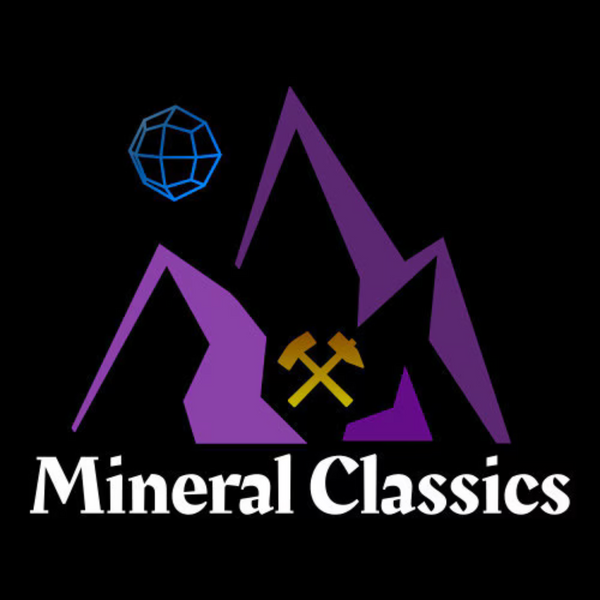Mineral Classics
Copal / Young Amber with insect inclusions
Copal / Young Amber with insect inclusions
Couldn't load pickup availability
This large cabinet display specimen is packed with over 100 (!) insect inclusions featuring mainly flies (Diptera) along with wasps (Hymenoptera), termites (Isoptera), caddisfly (Trichoptera), caterpillar (Lepidoptera larva), ambrosia beetle (Platypododae), rove beetle (Staphylinidae) and bark beetle (Scolytinae).
I honestly have never seen another specimen as large and as rich as this one. You can see from the close-up photos that this piece brings a lot to the table, and you can spend a great deal of time looking at it under magnification to see all of the impressively well-preserved insects inside! For the size, it's amazingly transparent, and not filled with crazing, cracks or internal "cloudiness" that would ordinarily prevent one from seeing all the fine detail inside. Truly a magnificent example of this wonderful material from Colombia!
Copal is classified as a "young amber", a form of preserved / fossilized tree resin. True amber is older than copal with most ambers ranging from 10 to 30 million years old. In a general sense, the word copal is used to describe a hardened resinous substance which is found in an intermediate stage of hardening and polymerization between softer / "gummier" resins and amber. The paleodirect website states that: " copal contains inclusions of modern living life-forms whereas true fossil amber contains inclusions mostly of EXTINCT prehistoric life." Interestingly, the term copal comes from the Nahuatl / Aztec word "copalli" which translates into "incense".
Specimen # AMBER51701
Share
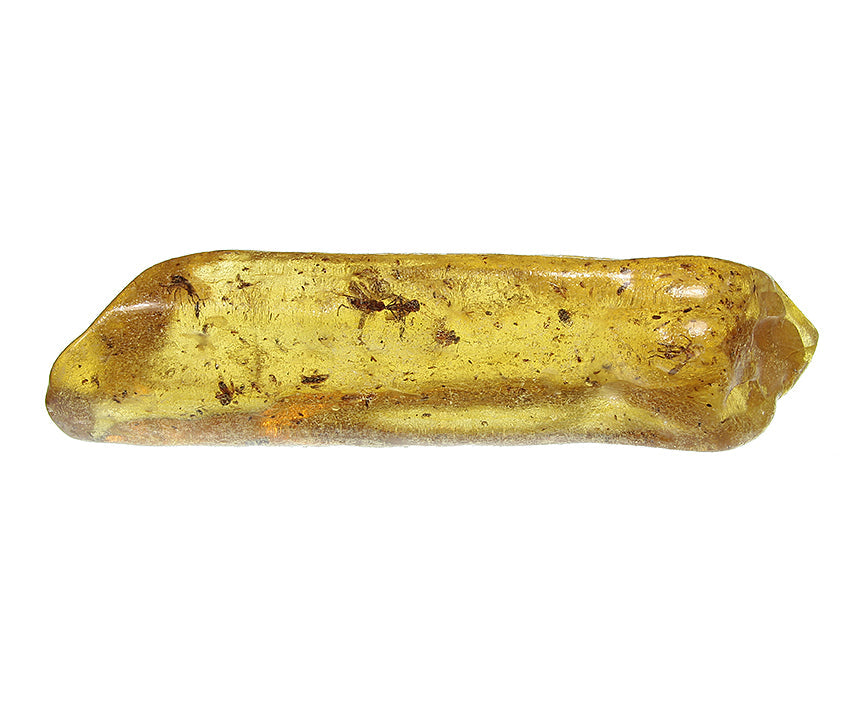
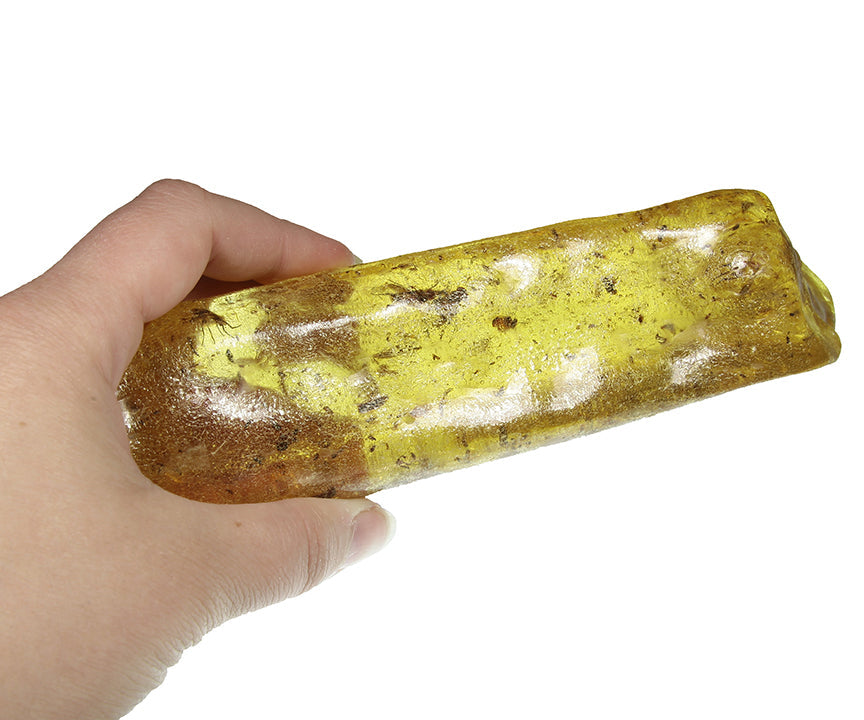
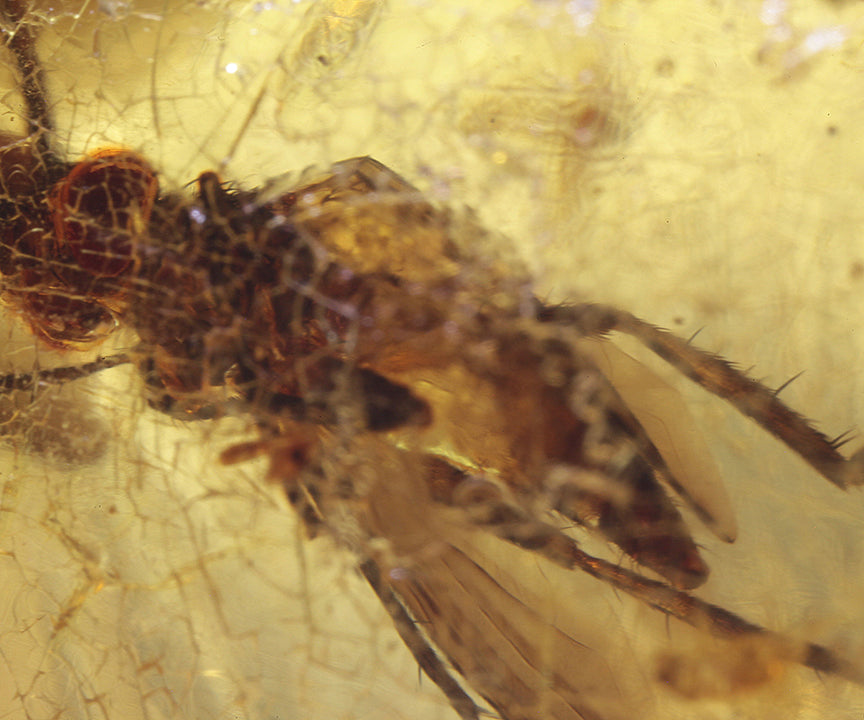
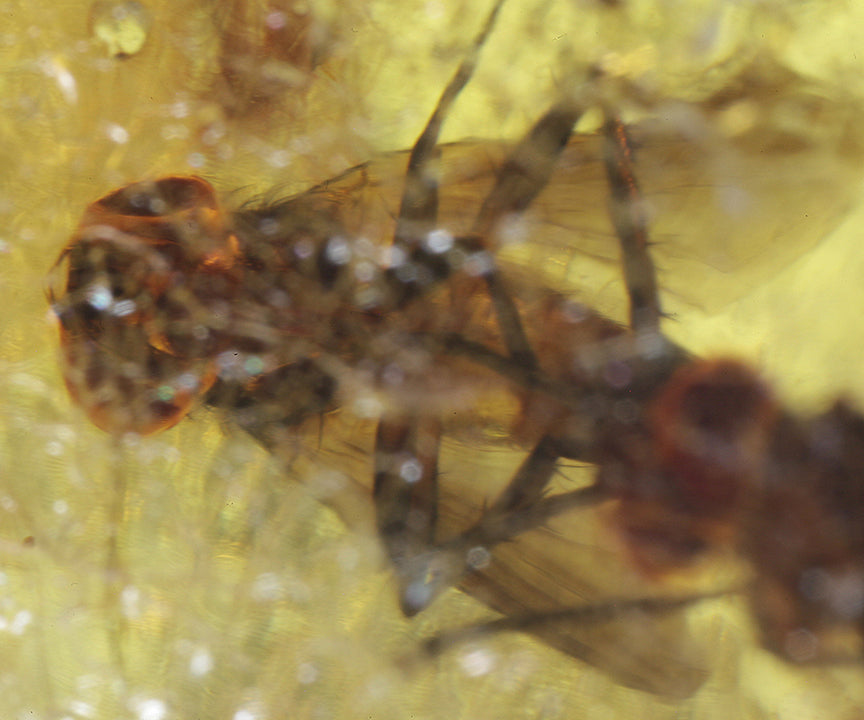
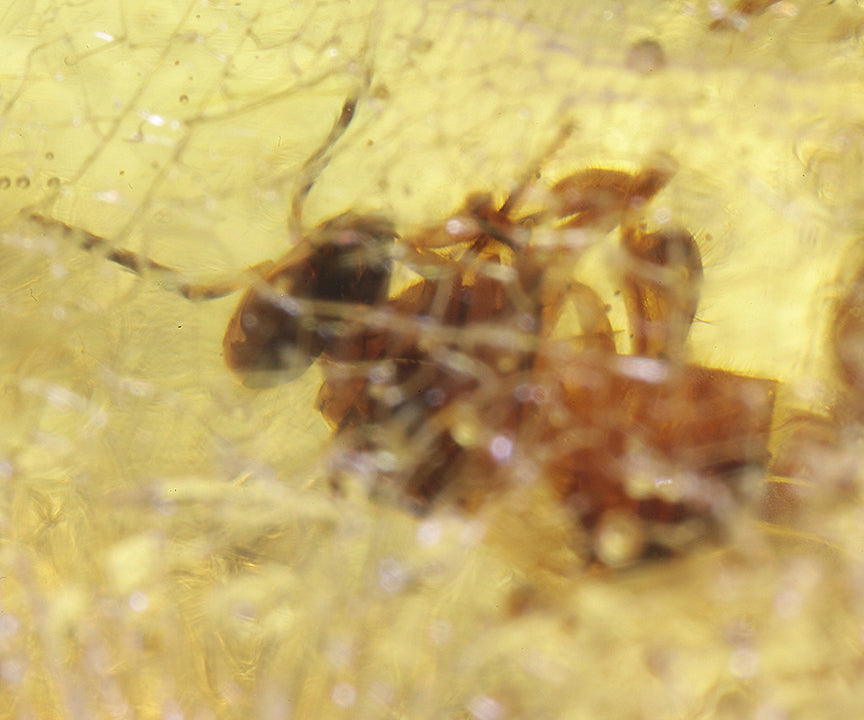
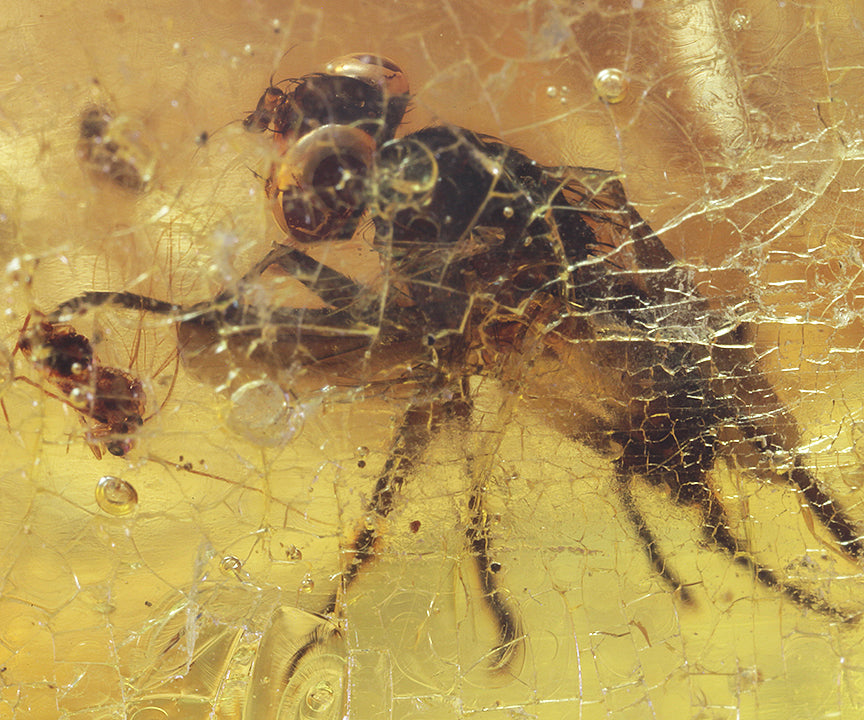
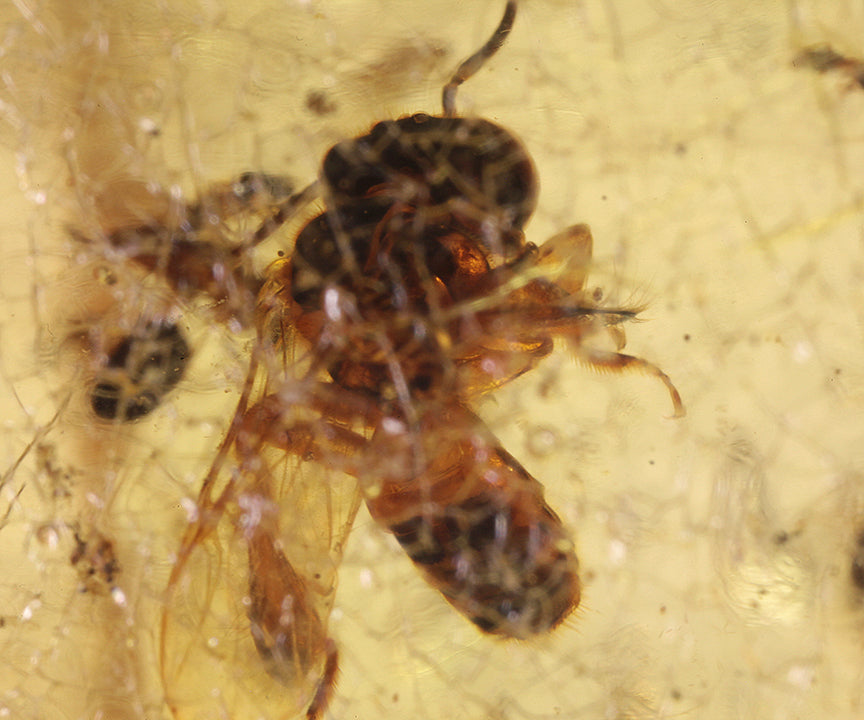
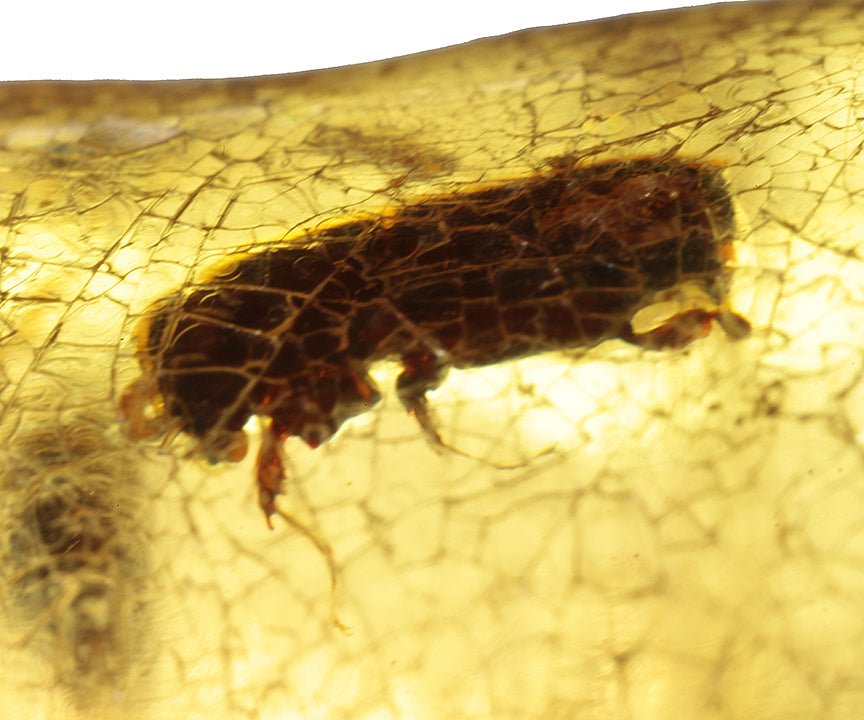
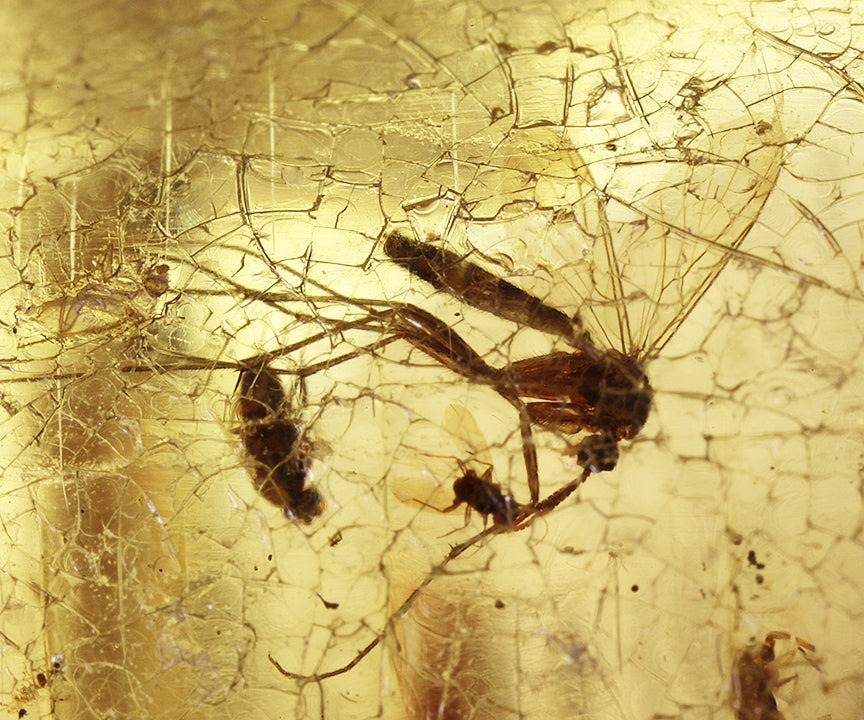
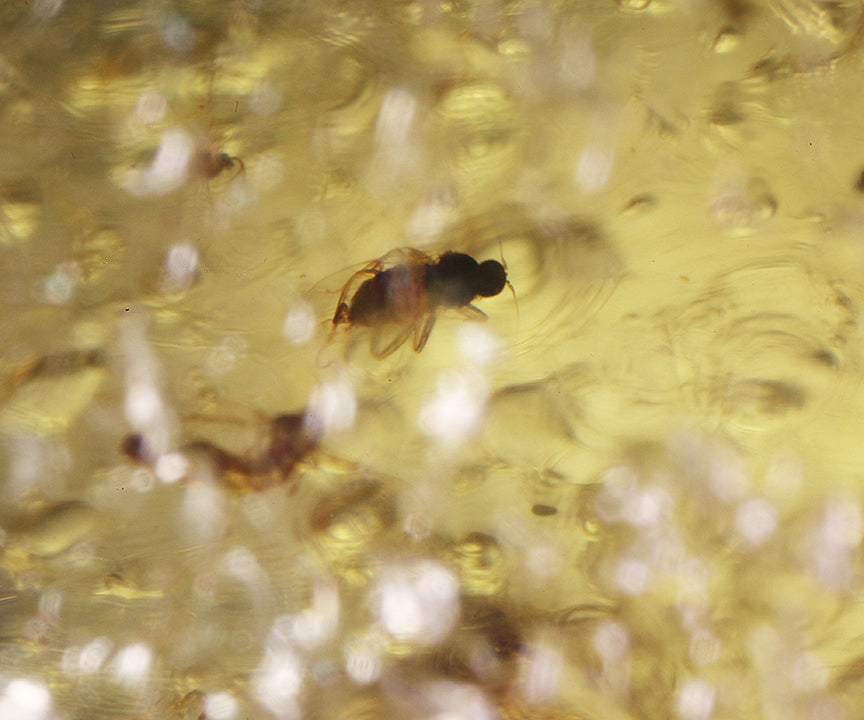
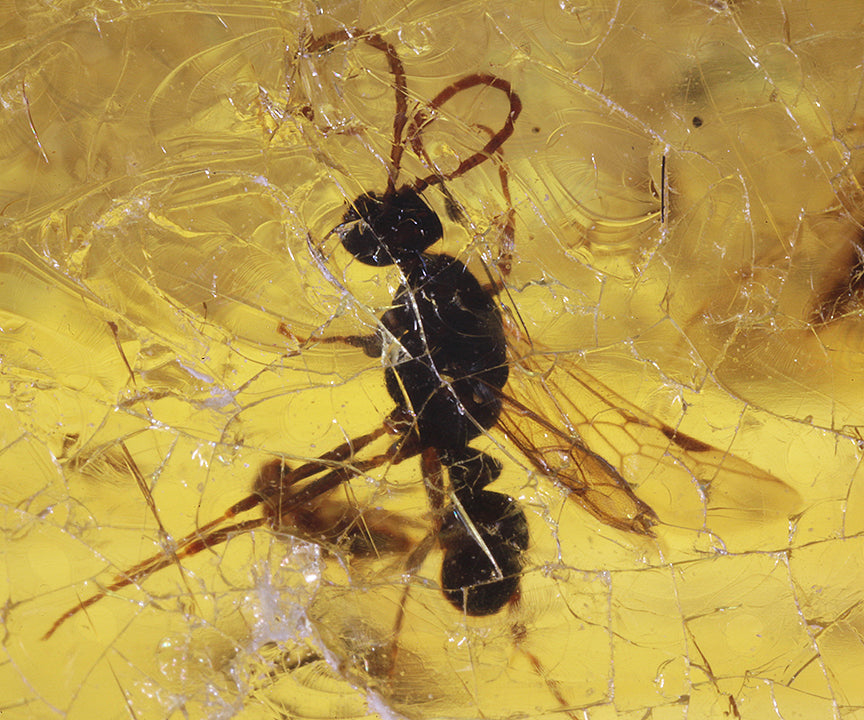
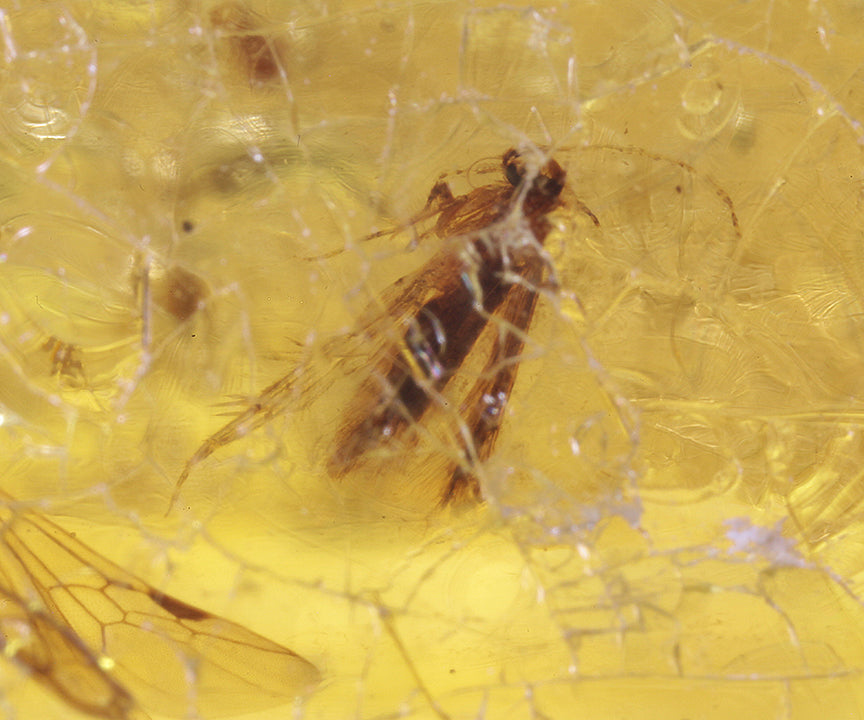
Locality: Colombia
Dimensions: 19.3 x 4.8 x 4.2 cm
Largest Crystal: Largest insect inclusion: 9 mm
Size Category: large cabinet
Fluorescence: NONE
